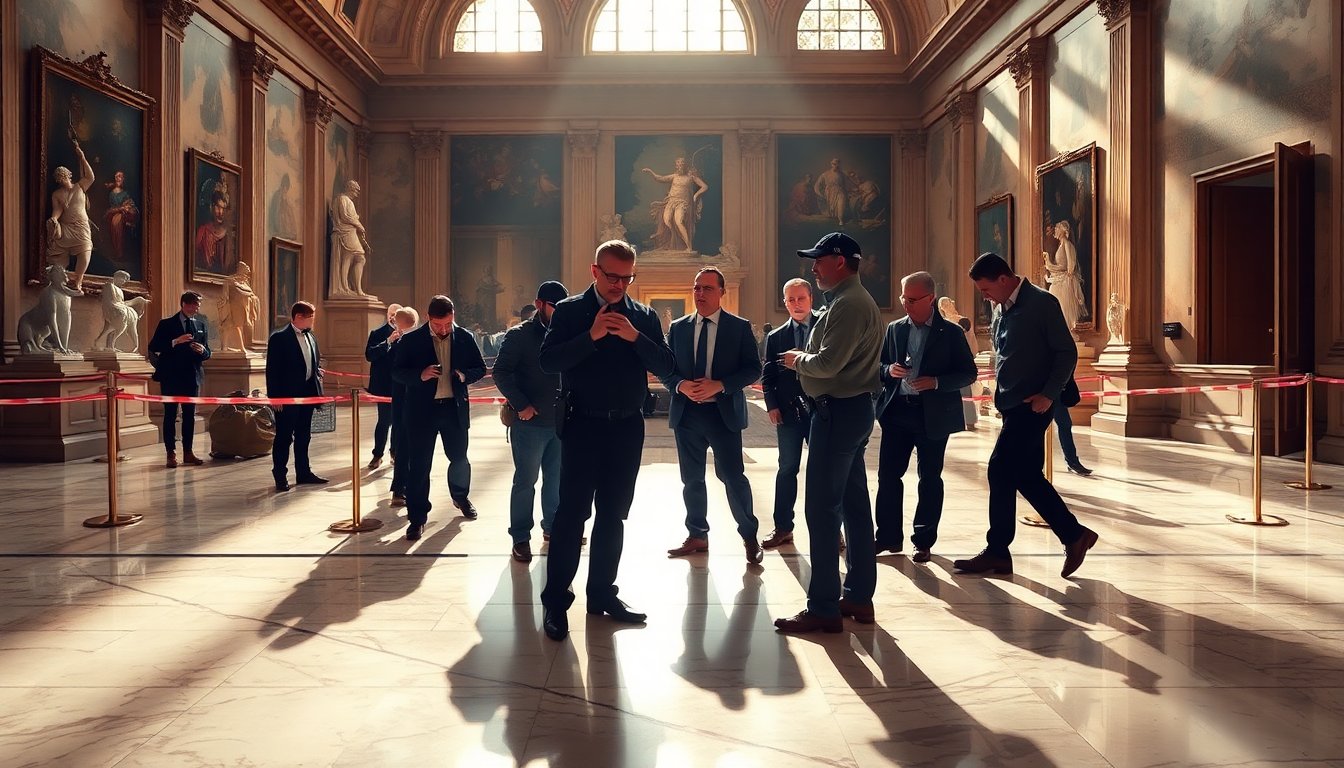Table of Contents
High-profile robbery at the Louvre museum
The iconic Louvre museum in Paris has recently garnered significant attention following a high-profile robbery. Thieves executed a bold break-in, resulting in the loss of numerous precious jewels, including thousands of diamonds. This incident has shocked the art world and sparked serious discussions about the adequacy of the museum’s security measures.
Details of the brazen theft
On an otherwise ordinary day, the calm atmosphere of the Louvre was disrupted when a group of thieves executed a well-planned operation. They successfully bypassed multiple security systems. Reports indicate they specifically targeted a valuable exhibit, quickly collecting a selection of valuable gemstones before disappearing without a trace. The audacity of the heist has left both law enforcement and the public in disbelief.
The heist timeline
Initial investigations indicate that the robbery occurred during visiting hours, raising serious concerns about security protocols. Eyewitnesses reported observing individuals behaving suspiciously near the display cases, yet their actions went unnoticed until it was too late. The thieves reportedly employed a combination of disguises and high-tech tools to aid their escape, complicating the investigation further.
Security implications for cultural institutions
The recent heist at the Louvre has raised significant concerns for cultural institutions worldwide. Many museums are now re-evaluating their security protocols in response to this incident. The Louvre, renowned as one of the world’s most iconic museums, has always touted its defenses for preserving art. However, this event has revealed vulnerabilities that other museums could also face.
Evaluating existing security measures
Experts in museum security are assessing the current situation at the Louvre, indicating a need for enhanced protective strategies. This may include the implementation of advanced technologies like facial recognition systems and motion detectors. Additionally, the conversation around increasing the number of guards monitoring exhibits has gained traction as a potential deterrent against future incidents.
Public reaction and future considerations
The theft has elicited a wave of shock and concern among the public. Art enthusiasts fear the potential loss of cultural heritage. Others are questioning the effectiveness of existing security systems at such renowned venues. Social media has been awash with comments as people express disbelief and call for enhanced safety measures.
Long-term effects on museum security
As the investigation unfolds and police pursue leads, the long-term consequences of the Louvre heist are likely to reshape museum operations. This incident may prompt institutions to implement stricter access controls and invest in modern technologies to better safeguard invaluable art pieces and artifacts.
The recent robbery at the Louvre museum has led to the theft of significant jewels and sparked a vital discussion on the need for enhanced security in cultural institutions. As authorities work to recover the stolen items, the art community is closely monitoring the situation, anticipating not only the return of the jewels but also the implementation of improved safety measures moving forward.


